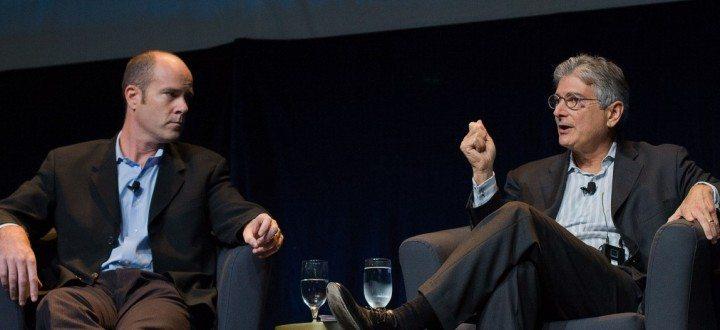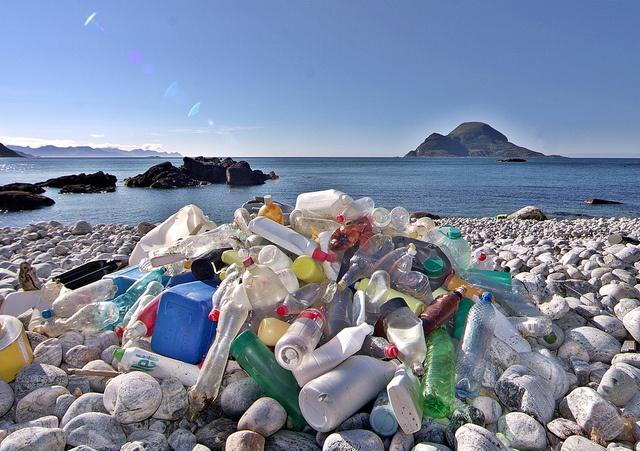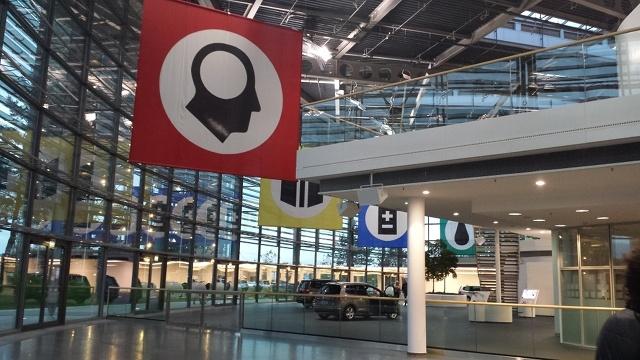Boerum Apparel: Kinder & More Sustainable Merino Wool Sweaters


Merino wool has been prized for centuries because of its soft texture and ease of delivering warmth for high performance clothing. But its production has sparked its share of problems, from outrage over animal cruelty to the industry’s environmental impact. The wool industry in Australia, where about half of all the globe's merino wool originates, has been called out for its cruel practices by PETA and the singer Pink. In recent years, more companies large and small, from Patagonia to PACT, are reacting by insisting that they now invest in more sustainable wool. Another company, Boerum Apparel, is taking ethics within its entire wool supply chain seriously, from farm to mill to factory.
So how does Brooklyn-based Boerum Apparel deliver impeccably-designed sweaters that boast fibers only 17.5 microns thick, yet are manufactured in a socially responsible way?
The journey starts on New Zealand’s South Island, on land such as a 14,000 acre farm that has been owned by the same family for 80 years. Scenes of the farm sum up our images of New Zealand; the Elliot family lets their sheep graze freely along the hills in their property, in small flocks so that none of the land risks overgrazing. The high altitude and cool weather, which rarely exceeds 68F° (20C°), allows the sheep to grow their coat without the danger of contracting flystrike, an infection that motivates many sheep herders to subject them to mulesing—the painful removal of hind skin callously done in the name of preventing infection.
From New Zealand’s hills the wool is taken to a mill and processed into yarn in Milton, a nearby town of 2,000 people. Also a family-owned business, the Bruce Woollen mill is less than an hour’s drive from many of the ranches where the local sheep are raised. Unlike the massive mills in countries like China where raw materials come from everywhere and everywhere, this mill knows all of the local ranchers personally—so employees know exactly which fiber comes from which pasture.
That yarn finally makes it across the Pacific to southern California, where workers turn the yarn into sweaters at Andari Fashion, a knit factory in the eastern Los Angeles suburb of El Monte. According to Boerum Apparel, the factory is inspected by auditors several times a month, and the workers can earn a decent wage.
Teel Lidow, the founder of Boerum Apparel, has been featured in many publications including Crain’s New York. The former corporate attorney founded Boerum Apparel with his own money, and recently has hit the conference circuit, including the Humane Society’s recent national meeting.
The work of Lidow and other entrepreneurs dedicated to ethical and cruelty-free clothing is reflective of how the fashion industry is facing more pressure to clean up its act, from stopping factory abuses in such nations as Bangladesh to reducing the amount of chemicals used in production. And while the focus on animals has long been on fur and leather, more activists, and consumers, want to know more about other animal fibers including wool. While some customers may balk at the cost of a sweater produced in humane conditions, more are realizing that cost is more than what comes at the register or by clicking on the “confirm purchase” button on a web site. Considering the clean and transparent trail Boerum Apparel’s clothing leaves behind thanks to a commitment to responsible sourcing, many will find these sweaters a very fair deal.
After a year in the Middle East and Latin America, Leon Kaye is based in California again. Follow him on Instagram and Twitter. Other thoughts of his are on his site, greengopost.com.
Image credit: Boerum Apparel
Net Impact Celebrates 22 Years of Breaking Boundaries


Editor's Note: This post originally appeared on New Global Citizen.
By Liz Maw
Twenty-two years ago, a small group of MBAs and entrepreneurs had a great idea. In the midst of a world where business was often viewed as an evil force, they dared to think differently. In the fall of 1993, MBA students from across the United States came together, united by their vision of a future where business could mean more than making money. Georgetown University hosted the first Net Impact Conference, attracting speakers that included Ben Cohen of Ben & Jerry’s (who showed up in an ice cream-stained T-shirt) and Anita Roddick of the Body Shop. The conference opened the eyes of the 140 students in attendance to the power of business to improve the world. It wasn’t the first or the last time that the Net Impact community would demonstrate its commitment to breaking boundaries.
This fall, the Net Impact community will once again return to this important theme. In many ways, the boundaries of the early 1990s were more entrenched and complex than those of today — the very concept of business as a force for good was suspect. While that debate may live on in some circles, today there is far more mainstream acceptance, from the C-Suite down, of not just the ability but the mandate for businesses to drive positive change in the world.
And yet, while norms have shifted, the boundaries of the 21st century are less obvious but no less limiting. In the realm of corporate social responsibility (CSR), most of the low-hanging fruit has been picked. It’s not enough to give away a lot of money, or tweak a supply chain, or incubate a small social enterprise. The barriers we are grappling with are global in scope and structurally multi-faceted. What’s more, the stakes are higher than ever; persistent poverty, global health epidemics, climate change, and joblessness threaten the lives and livelihoods of billions of people around the world.
In early November, MBA students and business leaders alike will have the opportunity to come together at the 2014 Net Impact Conference in Minneapolis to take on the messy, uncomfortable and controversial — yet inspiring and imperative — challenge of breaking boundaries once again. Impact leaders across sectors are embracing three strategies for disruptive change: forging unexpected alliances, embracing multiple definitions of the truth, and leaving limits behind to shape creative solutions that can transform the world.
1. Work with the “Enemy”
Breaking boundaries often requires being willing to collaborate with the most unlikely allies, even competitors. Unilever CEO Paul Polman has broken many boundaries with his leadership of the world’s third-largest consumer packaged goods company, from his emphasis away from short-term returns to long-term value to his commitment to grappling with the world’s biggest problems. To have a discernible impact on big issues, Polman knows that he must work with many stakeholders, including the competition.
Says Polman: “What we’re now dealing with are enormous challenges of poverty or climate change; sustainable growth in its broadest sense; equality … That requires a broader level of partnerships.” As one example, Unilever is working with marketplace rival Nestle on a coalition to convert the global market to natural refrigerants for display cases. “It needs a tipping point; no individual company can do that alone,” Polman adds.
Dr. Temple Grandin, who became famous for her achievements in mathematics, has also embraced the opportunity to work with unexpected bedfellows. Because of her high-functioning autism, Temple thinks differently than most of us.
Grandin has leveraged her keen ability to think visually, due to her hypersensitivity to noise and other sensory stimuli, into a unique and monumental career collaborating with fast-food companies like McDonald’s to improve the conditions of slaughterhouses.
An animal lover working on slaughterhouses? As you might expect, her work with McDonald’s and others has been decried by animal activists, yet Grandin has been steady in her conviction to focus on maximizing animal comfort over lengthening animal lives.
2. Put the truth on trial
To overcome the limitations of the status quo, leaders cannot hide behind publicity and good marketing. They must embrace the opportunity to dialogue through differences in a public forum. Last year, Net Impact welcomed a lively debate between Exxon Vice President Ken Cohen and Sierra Club CEO Michael Brune. While charged at times, the forum helped further the dialogue on the future of energy. As conference attendee and sustainability professional Laura Clise noted, “Leadership is the willingness to participate in difficult conversations. Dialogue takes courage on both sides.”
According to a recent Harris poll, Monsanto has one of the worst reputations in the United States, yet it is also a company that is deeply engaged with the challenge of how to feed the 2 billion people that are projected to join the population of the planet by 2020. Monsanto executives know their company invites controversy, and they embrace the opportunity to dialogue with people who oppose their perspectives. This year, the Net Impact Conference will provide a forum for Monsanto executive Natalie DiNicola to debate the future of food with NGO leader M. Jahi Chappell from the Institute for Agriculture and Trade Policy, sharing their contrasting viewpoints on how to feed the world sustainably.
3. Measure what matters
Overhead spending has been one of the most commonly used metrics to define “good” nonprofits by groups like the Better Business Bureau, but Dan Pallotta has begun a revolutionary movement to change how organizations measure the difference they make in the world. A decade ago, his company, Pallotta TeamWorks, was criticized for overspending on marketing, administration, and logistics. His critics argued that such overhead costs cut too deeply into the potential impact of their charitable contributions. Too many nonprofits, Pallotta says, are rewarded for how little they spend instead of for their results. He suggests that nonprofits should be evaluated on the basis of their ambitious goals and measurable impact, not their overhead spending.
In his now-famous 2013 Ted Talk, provocatively titled, “The Way We Think About Charity is Dead Wrong,” Pallotta makes the point that the outcomes of the charity—in his case, fundraising hundreds of millions of dollar for AIDS and other health causes—outweigh the need to limit overhead spending in the nonprofit sector. As a keynote speaker at Net Impact 2014, Dan will ask the social impact community to question long-held assumptions about the best ways to measure impact and effectiveness.
Breaking boundaries to repair the world
This fall, the Net Impact community will once again come together to break boundaries, just as it did more than two decades ago, in an effort to break the boundaries that prevent change-makers from creating a just and sustainable world. Mandy Yard, a student attendee at the last two Net Impact conferences, summarized her transformational experience:
“I consider it a mind-blowing, life-changing experience. Not only are you surrounded by friendly, passionate, and knowledgeable people, but you are also exposed to inspirational and practical tools to increase social impact in any field.”
Join the Net Impact community Nov. 6-8 on a boundary-breaking journey to repair the world.
Liz Maw is the CEO of Net Impact, a global nonprofit that empowers a new generation to work for a sustainable future. Since 2004 when Liz joined, Net Impact has tripled its chapter network to nearly 300, formed partnerships with over 50 global corporations, and developed multiple new programs that engage students and professionals to drive transformational change in the workplace and the world. Liz is a frequent speaker and writer, with blogs appearing in the Stanford Social Innovation Review, Guardian Sustainable Business, GreenBiz, and World Economic Forum. Liz was named one of the 100 most influential people in business ethics by Ethisphere. She holds a BA with honors from Yale University and an MBA from Columbia Business School and the Haas School of Business at UC Berkeley.
Human Rights Guidance for Corporate Lawyers


In the years since the United Nations Guiding Principles on Business & Human Rights (Guiding Principles) were unanimously endorsed by the U.N. Human Rights Council in 2011, groups like Shift and the International Corporate Accountability Roundtable (ICAR) have worked hard to educate businesses on how the Guiding Principles impact their operations and influence their decision-making. Much of this guidance has been sector specific, and rightly so. Human rights are not impacted uniformly or in the same ways across industries, and companies in the extractive, apparel or ICT sectors, for instance, arguably operate in “riskier” environments than businesses in other industries.
Yet, despite playing major roles in drafting, advising and acting on the Guiding Principles, lawyers had thus far been offered little help understanding the impact of the Guiding Principles on their work. Last week, the International Bar Association (IBA) did its part to rectify that, issuing guidance -- the first of its kind -- to bar associations, private lawyers and law firms about how to integrate the Guiding Principles into their work. This is a welcome first step in what should be a broad discussion among lawyers and bar associations regarding the role of lawyers in the implementation of the Guiding Principles.
Why the IBA guidance is necessary
Not only are many law firms big businesses in their own right -- and the legal industry, by some measures, represents a $400 billion market in the U.S. alone -- but lawyers make their livings by advising companies on compliance and risk avoidance. Thus, as the IBA points out in the introduction to its report, “There are few areas of legal practice for which the Guiding Principles – and the international human right standards they reference – are not potentially relevant.” Companies also increasingly expect their legal counsel to be able to provide advice on human rights risks.
What role individual can lawyers play
General advice. The first aspect of the IBA’s substantive guidance addresses how lawyers, in their roles as outside or inside counsel, can help businesses respect human rights -- the second pillar of the Guiding Principles. The IBA notes that often the lawyer’s role could simply be to advise a business on how to comply with existing national laws that protect human rights. Such advice would first require a lawyer to analyze the national legal framework and determine that national laws meet the minimum standards underpinning the Guiding Principles.Where there is a gap between what national law and the Guiding Principles require, the lawyer should be prepared to explain the gap and advise on what the business must do to satisfy the higher standards. For instance, as the IBA explains, acquiring legal title to land may be, in and of itself, insufficient to discharge a company’s duty to respect human rights. This would be true where that land was 'grabbed' by a government without consulting with or compensating the affected households or communities -- common practice in countries across Africa and Asia. In those cases, not only is the company linked to a serious human rights violation, but the “defective government acquisition process may sow the seeds of conflict between the community and the company, which could threaten the project’s long-term viability.”
Specific company actions. Beyond broadly advising business clients on their human rights responsibilities under national law, lawyers are increasingly called upon to provide human rights-related advice as it relates to certain company actions. One such action is public reporting or disclosure. In one of the more encouraging trends in the business and human rights movement, non-financial reporting requirements have greatly evolved and increasingly require disclosure of a company’s human rights “policies, processes and performance.”
For example, the European Union is on the verge of passing a directive that would require broad reporting on the environmental, social (including human rights) and governance impacts of their work. Denmark has a non-financial reporting law, as does the U.K., and the U.S. already requires certain disclosures related to conflict minerals and businesses operating in Burma.
Human rights litigation and tactics. Though the battle against corporate impunity for human rights abuses may still be an uphill one, the rise in human rights-related claims filed against companies around the world should be of particular concern to corporate lawyers. In the United States, there is the rapidly evolving -- if disheartening -- Alien Tort Statute jurisprudence. Internationally, the use of National Contact Points under the Organization for Economic Cooperation and Development’s (OECD) Guidelines for Multinational Enterprises has exploded. Understanding the Guiding Principles and the international human rights laws on which they are based is crucial to any lawyer hoping to navigate such matters.
The IBA also deserves credit for pointing out that the Guiding Principles may also require a lawyer to question a company’s litigation strategy or tactics in human rights cases. The Guiding Principles’ architect, Professor John Ruggie, himself raised this in the runup to the U.S. Supreme Court’s Kiobel opinion. In the time since Kiobel, we have learned that Shell -- the defendant in the Kiobel case -- extensively lobbied the U.K. government, seeking amicus support at the U.S. Supreme Court, which it received.
As the IBA points out, the Guiding Principles in no way undermine a lawyer’s duty to zealously defend his or her client(s) or to betray client confidences. However, they likely do require that a lawyer explain “the entire range of risks entailed by the [company’s] litigation strategy and tactics, ... as part of helping their client understand the full implications of any proposed approach to responding to claims of human rights harms.”
The implications for law firms as businesses
Finally, the IBA explores the human rights obligations that arise from a law firm’s provision of legal services and advice to business clients. Importantly, despite having independent human rights obligations, a law firm “cannot force a business client to do anything that the client does not want to do.” This tension may lead to situations where a firm’s duty to its client could appear to conflict with its human rights obligations under the Guiding Principles.
Where such a tension arises, the IBA suggests that the law firm consider whether it can leverage its role as the business’ trusted advisor to encourage the business to consider the human rights impacts of its decisions. Given the confidential nature of the firm-client relationship, a law firm can do so “without fear that the communication will become public.”
The IBA recommends the following practical tactics:
- Emphasizing to all clients up-front that it intends to advise on the ‘big picture,' which includes human rights risks, in order to provide greatest value to all clients
- Raising the kinds of problems that other companies have faced when they have not fully addressed human rights issues associated with a similar matter
- Offering capacity-building training to clients and their legal departments on human rights issues
- Providing advice and services on business and human rights on a pro bono basis to clients
- Issuing client alerts on specific human rights issues related to its individual practice groups
- Participating in multistakeholder dialogues where the firm can champion business and human rights issues
- Supporting the efforts of law societies and bar associations to provide training and guidance for member lawyers on business and human rights issues
The IBA ends on a collaborative note, suggesting that law firms and lawyers, “when acting collectively, are likely to be able to assert much greater leverage than they can alone.” Hopefully the American Bar Association and state bar associations will heed the IBA’s call and start talking about these challenging issues.
Image credit: Flickr/mikecogh
Green and Productive? Metrics Can Show You the Money


By Bob Best
Greening your office bears many fruits, but balancing the competing imperatives of sustainability and workplace productivity can be a challenge. Sustainability initiatives can cut energy costs and boost your company’s reputation as a socially responsible organization. But when green workplace initiatives actively thwart employee comfort — think: unpleasant thermostat settings — they can actually undermine employee productivity. With metrics-driven analysis, you can pinpoint exactly where sustainability programs are helping — or hurting — employee health, wellbeing and productivity.
Side-by-side comparisons reveal opportunity
Who doesn't want to improve productivity while scoring corporate social responsibility points? Until recently, however, most organizations have looked at sustainability and productivity as separate domains. The new thinking is that sustainability and productivity are linked and should be assessed in tandem. The catch: The two are not always aligned. Sometimes green investments are not productive, and vice versa. Understanding which green features are good for employee productivity in a particular building can be critical to determine investments in green building or green office programs.
A new report from JLL and the World Green Building Council, Health, Wellbeing and Productivity in Offices: The Next Chapter for Green Building, provides compelling evidence that green offices can be more productive with an analysis of more than a decade’s worth of research on the impact of green office practices on employee health, wellbeing and overall productivity. New software can assess how and where green office practices are working for or against productivity, and where gains might realistically be achieved.
The lucky three rule of thumb
Consider the “3-30-300” rule of thumb, which proposes that the greatest financial savings from greening a workplace can emerge not in resource conservation, but in productivity gains. If an organization spends $3 per square foot on annual utilities, $30 on rent and $300 on payroll, a 2 percent energy efficiency improvement equals savings of 6 cents per square foot. More impressive, achieving a 2 percent productivity improvement would result in a whopping $6 financial gain in revenue per square foot. As beneficial as energy savings can be, any green investment that increases employee wellness and productivity can have exponentially greater value.
The trick is to determine gains or setbacks in both green practices and productivity in tandem, holistically tracking metrics for their impact on the broader organizational goals. Today’s new software track a wide range of sustainability and productivity metrics in one building or across many, and benchmark your company’s scores against other companies’ metrics to identify potential — achievable — sustainability and productivity goals. The software also measures your company’s assessment against the Dow Jones Sustainability Index, an important measure for corporate social responsibility and reputation.
You can use the software to assess and assign scores across a wide range of activities in the key categories of energy, water, waste and use of resources; space use efficiency and layout; and employee wellness and productivity. Metrics can be applied to characteristics of lighting, heating and cooling, plug loads and server rooms, green purchasing, use of paper, recycling programs, commuting, green tenant programs, workplace configuration, acoustic and visual comfort, thermal and indoor air quality, amenities, and more.
Benchmarking provides an objective understanding of a facility’s strengths and pinpoints where productivity gains could be achieved via modifications to sustainability features. The results might suggest that employees need more access to natural light, for example, or that an investment in computerized lighting could save energy without compromising employee workspaces.
For example, a facility achieving energy savings may achieve a high "green" score, but a low productivity score because employees are too hot or cold. The right metrics will enable a company to quantify the impact on annual revenue. It might earn a high productivity score for a work-enabling office layout, but a low green score for lack of onsite recycling.
One JLL client’s experience reveals the value of benchmarking various green practices in an even more tangible way. The client used the metrics to identify green investments that will ultimately achieve more than $160,000 in productivity gains in a single facility.
Key concepts for data integration
For metrics to do their job, first consider the company’s current level of effectiveness in balancing sustainability and productivity:
- Can you prioritize employee comfort and energy efficiency equally, by purposefully choosing green practices that optimize both?
- Do you monitor how well and how often employees engage in green programs, such as recycling?
- Does your facility use space designed for the work to be performed, offering optimum environments for individual tasks, employee interaction, team building, operations and customer service?
- How well does your facility support employee wellbeing? To what extent have you established environmentally friendly features such as temperature and noise control, pleasing indoor air quality, and access to natural light?
Ultimately, the use of a wide range of metrics and related analyses will provide insights far beyond stating the face value of any single initiative — all in one metrics-driven fell swoop. Enormous potential lies in analyzing data across these traditionally separate realms of sustainability and productivity. Side-by-side impact comparisons can support long-term strategic thinking that strengthens both sustainability and productivity efforts. Let the metrics show you the money — and the happy, healthy employees.
Image credit: Flickr/kodomut
Bob Best directs energy and sustainability business operations – with responsibilities that include new business development, energy reduction programs, client sustainability efforts, performance metrics, operating standards and training. He is a LEED® Accredited Professional through the U.S. Green Building Council and a Green Globes Professional through the Green Building Initiative. Best co-authored "Green + Productive Workplace: The Office of the Future…Today."
3 Lessons Businesses Can Learn From Nonprofits


By Lisa Brown Morton
Nonprofits are regularly called on to act more like businesses. However, consumers and stakeholders are increasingly placing a premium on social impact, the territory that nonprofits know best. Whether they define themselves as social enterprises, socially conscious companies or startups changing the world, for-profit businesses are recognizing the value of fostering community, being part of a larger conversation and putting people before profits -- or at least equal with them.
While companies like TOMS, which make charity an integral part of their brand identity, immediately come to mind, other companies have been quick to build community around other causes. Disruptive upstarts like Uber and AirBnB engage in their own forms of activism as they seek to alter laws and regulations. Their effectiveness and success depend on the ability to engage communities around a common cause.
This is what nonprofits do best, and there is much that businesses can learn from nonprofits about how to make a difference. Read on for three essential lessons that can be drawn from the nonprofit experience.
1. Engage your stakeholders and understand their needs
It’s not activism if it’s only for your benefit, and it’s not going to make a difference if it’s not an appropriate solution to the problem you’re trying to solve. Our admirable desire to address problems often compels us to do something, anything at all, to feel as though we’ve made an effort to help. But as the laundry list of bizarre items that are donated to disaster relief efforts attests, good intentions can lead us astray.
Don’t assume that you already know the problem you’d like to address before you’ve made a thorough effort to assess the actual needs of your stakeholders -- whether this is your customers, whom you intend to serve and advocate for, or a separate population you intend to help. Nonprofits do extensive assessments of their targeted population’s needs and often find the needs of a community was presumed to have are, in fact, symptoms of a deeper, more urgent need and require substantial adjustment and oftentimes a different course of action.
2. Tell a powerful story
Nonprofits are master storytellers out of necessity. The story -- of what they do and why they do it -- is the reason for the nonprofit’s existence, and it’s through that story that they raise awareness and attract supporters, resources and institutional backing. In that sense, it’s the nonprofit equivalent of an investor and sales pitch in one. For a business looking to make an impact, it should command just as much attention, because the story is how you generate public interest and support for your efforts.
A powerful story identifies the affected community, the problem, the solution and the role that your company’s efforts will play in making a difference. When Warby Parker talks about its “buy one give one” program, it highlights the number of people who lack access to eyewear, and how obtaining eyewear changes their lives. When Uber talks about its legal wrangles with government, it talks about giving people choice and convenience.
3. Create a community around your work
Nonprofits rely on the communities they serve to be a force multiplier and vital source of new ideas. They have to, because many nonprofits operate with just a small core of dedicated staff. But ultimately activism, public engagement and other attempts to make a social impact are community efforts, and their success is inseparable from their ability to bring people together, sustain effort over time, and ultimately see change.
Think of the community as a shareholder. Your customers have a substantial stake in your work, and you are accountable for delivering value to them. Whether you build your community in person or digitally is less important than creating the ability for affected and involved individuals to feel like they are participating in something larger than themselves. When the Red Cross collects blood, it does so in coordinated drive events and gives people stickers to wear for the rest of the day. For an individual, this makes their connection to the community and the larger purpose very real.
Nonprofits are the original social enterprises, and if your business is looking to make an impact, take a few pages from the nonprofit playbook.
Image credit: Reynermedia, Flickr
Lisa Brown Morton is the President and CEO of Nonprofit HR, the only human resources firm in the country focused exclusively on nonprofit organizations. Lisa has worked with some of the most prominent nonprofits in the country, from Amnesty International to the Aspen Institute, and is a vocal advocate for the advancement of the nonprofit sector.
Georgia Acquires Cheap Solar Power


Georgia Power filed a request for certification to enter into power purchase agreements (PPAs) for 515 megawatts of solar power. Georgia Power, Southern Co.’s largest utility subsidiary, filed the request in April with the Georgia Public Service Commission.
The PPAs include deals with two solar power projects with a combined 99 MW of capacity that will be owned by Southern Power, the wholesale generation subsidiary of Southern Co. The PPAs are the largest solar power acquisition in Georgia and are part of Georgia Power’s Advanced Solar Initiative.
The average price of power in the four PPAs for solar projects with less than 20 MW of capacity was less than 6.5 cents per kilowatt hour, which is “2 cents below the cost achieved through the [utility's] 2013 solicitation" for solar power, according to Georgia Power’s filing. The four smallest projects have a combined capacity of 76 MW and are expected to come online by the end of 2015. Georgia Power praised the prices as proof that solar can “provide competitive pricing when challenged to do so,” in its filing.
The filing didn’t mention the PPA pricing of the six largest solar projects, which have a capacity of 30 to 101 MW and total 439 MW. Platt stated in an article last month that “given the economies of scale associated with larger projects, their power prices would likely be even lower than the 'less than 6.5 cents/kWh' in the smaller-project PPAs.”
Georgia Power is being recognized for its solar initiatives. The Solar Electric Power Association (SEPA) announced recently that Georgia Power was selected as the 2014 Investor-Owned Utility of the Year. Julia Hamm, president and CEO of SEPA, praised Georgia Power for its "whole-hearted response to calls from customers and stakeholders to become a leader in the development of solar in the state." Hamm added that Georgia Power's "ability to, in short order, develop a significant portfolio of solar projects at affordable prices should be a model for utilities everywhere."
PPAs are not the only component to the Advanced Solar Initiative, which was approved by the Georgia Public Service Commision in November 2012. Georgia Power has several solar projects it has constructed, including three solar plants at Georgia Army bases. The three solar plants will be sited at Fort Stewart near Savannah, Fort Benning near Columbus and Fort Gordon near Augusta. The projects will total 90 MW and are expected to be the largest solar power plants on military bases. They are scheduled to be completed by the end of 2016.
Image credit: Georgia Power
57 Tons of Garbage Removed From Northwestern Hawaiian Islands


Last week, a team of 17 National Oceanic and Atmospheric Administration (NOAA) divers returned from a mission in which it removed 57 tons of debris from the Northwestern Hawaiian Islands.
The divers traveled on the NOAA ship Oscar Elton Sette for a 33-day mission to remove marine debris from Papahanaumokuakea Marine National Monument in Hawaii. The monument is a World Heritage Site and one of the largest marine conservation areas in the world. Most of the debris removed was either fishing nets or plastic letter.
NOAA has led missions to clean marine debris every year since 1996, removing 904 tons in total, including the 57 tons removed on this latest mission.
The Northwestern Hawaiian Islands include 5,178 square miles of the least disturbed coral reef habitat in U.S. waters. Divers found three sea turtles tangled in nets at Pearl and Hermes Atoll. The divers removed almost 6.25 tons of plastic trash on the shorelines of Midway Atoll National Wildlife Refuge. At the end of the voyage, they removed 7,436 hard plastic fragments, 3,758 bottle caps, 1,469 plastic beverage bottles and 477 lighters.
“The amount of marine debris we find in this remote, untouched place is shocking,” said Mark Manuel, operations manager for NOAA Fisheries Coral Reef Ecosystem Division and chief scientist for the mission. “Every day, we pulled up nets weighing hundreds of pounds from the corals. We filled the dumpster on the Sette to the top with nets, and then we filled the decks. There’s a point when you can handle no more, but there’s still a lot out there.”
The Great Pacific Garbage Patch
Where does all of that debris come from? It is part of the Great Pacific Garbage Patch, a huge collection of marine debris in the North Pacific Ocean spanning waters from the North American West Coast to Japan. It is also called the Pacific Trash Vortex, and it is the largest plastic dump on earth. Most of the debris is not biodegradable and much of it is plastic, which breaks down into small pieces known as 'microplastic.'
About 80 percent of the debris in the Great Pacific Garbage Patch comes from land-based activities in North America and Asia, and 20 percent comes from boaters, offshore oil rigs and large cargo ships. The majority of the debris from ocean-based activities is fishing nets, about 705,000 tons in total.
Captain Charles Moore first discovered the Great Pacific Garbage Patch in the early 1990s when he sailed through an area between Hawaii and the mainland that is rarely traveled. During a week, he noticed a steady stream of plastic debris float by although he was hundreds of miles from land. Scientists have collected up to 750,000 microplastic pieces in just one square kilometer of the Great Pacific Garbage Patch, which equals about 1.9 million bits per square mile. Most of the debris comes from plastic bags, plastic water bottles, bottle caps and Styrofoam cups. Scientists predict it will likely double in size in the next 10 years.
In 2001, scientists documented that plastic particles outnumbered plankton by a factor of 6:1, or for every pound of plankton in some parts of the Pacific gyre, there were six pounds of microplastic. In one area, there was found to be an average of 334,271 pieces per square kilometer . Some fish and birds are eating the microplastic pieces. Five to 10 percent of fish in the area contain small pieces of plastic.
Where does all of the microplastic come from? Seven billion pounds of non-recyclable plastic is created every year. Unfortunately, some of it ends up in the Pacific Ocean.
Image credit: Bo Elde
Photo Gallery: Tour the Volkswagen Autostadt in Wolfsburg, Germany


With a busy week behind you and the weekend within reach, there’s no shame in taking things a bit easy on Friday afternoon. With this in mind, every Friday TriplePundit will give you a fun, easy read on a topic you care about. So, take a break from those endless email threads, and spend five minutes catching up on the latest trends in sustainability and business.
When it came time to buy my first car, my dad and I drove down to the used car dealership, and we wound up buying the first one we saw. Here in the states, this is a fairly common occurrence. 'See it, like it, drive it, buy it' is the typical car-buying process for millions of Americans, myself included.
So, you can imagine my surprise as I sat down to lunch last week at the Ritz-Carlton, Wolfsburg and learned that buying a new car often takes months for Europeans. Forget picking one out and driving it off the lot. Across the pond, most families work directly with an automaker to customize every aspect of their new ride. They then wait weeks for their custom vehicle to be produced.
After all that waiting, many European drivers crave a bit of pomp and circumstance when they pick up their new car. That's why thousands of car-buyers journey here to Wolfsburg every year. They often make a weekend of it -- staying at the Ritz-Carlton, touring the stunning countryside and visiting the Autostadt, Volkswwagen's theme park and educational center that focuses on "people, cars and what moves them." During their stay, buyers head to the Car Towers, the world's largest delivery center, to pick up their ride (picture an enormous vending machine -- but filled with cars).
But car-buyers aren't the only people who visit the Autostadt. In fact, the park attracts around 2 million visitors each year -- more than 29 million since the official opening in 2000 -- making it one of the most popular tourist destinations in Germany. I had a chance to tour the park, which sits on the site of an old industrial complex and puts the automaker's efficient and sustainable design on display. Click through for the virtual tour to catch an glimpse for yourself.
[gallery columns="4" ids="196883,196884,196885,196886,196887,196888,196889,196890,196891,196892,196893,196894,196895,196896,196897,196898"]
All images by Mary Mazzoni
Editor's Note: Travel accommodations for the author and TriplePundit were provided by Volkswagen.
Based in Philadelphia, Mary Mazzoni is a senior editor at TriplePundit. She is also a freelance journalist who frequently writes about sustainability, corporate social responsibility and clean tech. Her work has appeared in the Philadelphia Daily News, the Huffington Post, Sustainable Brands, Earth911 and the Daily Meal. You can follow her on Twitter @mary_mazzoni.
Nadya Zhexembayeva on Innovation in a Resource-Deprived World


I met Nadya Zhexembayeva at the Flourish and Prosper conference in Cleveland. Nadya, who received her doctorate at Case Western, is the co-author, with Chris Laszlo of "Embedded Sustainability." Her latest book is "Overfished Ocean Strategy." I attended one of her workshops, and then arranged to speak with her, by phone, after the conference.
Triple Pundit: Hello Nadya. The sub-title of your book is “Powering Up Innovation For a Resource-Deprived World.” Talk to me about declining resources. When I saw your workshop you showed a graph of steadily decreasing commodity prices.
Nadya Zhexembayeva: That graph is from the Economist which has been tracking commodity prices since 1864. For the majority of the 20th century, other than a sharp spike in the 1920s those prices have been falling significantly — until now. When you think of the fact that these are limited resources and that the population has increased by a factor of four during that time, driving demand up dramatically, this is a bit of an economic miracle. And this miracle has informed the mindset of most managers. They simply assume that prices will continue to fall forever. That is the basis of many of their growth models. However, what many people haven’t recognized is the fact that in the first 10 years of the new millennium, these prices have shot up a whopping 147 percent.
3p: Wow. That’s pretty dramatic. You say in your book that this new scarcity is here to stay. But how do we know that it isn’t just another temporary blip? After all, much of this decline had to do with productivity and economies of scale, as well as the accumulation of knowledge. Aren’t we still learning and innovating?
NZ: Yes, of course we are still innovating and learning. But if we look at the trend, although much of the price decline was from productivity improvements, we can’t overlook geopolitical trends either. Particularly after the Second World War, we have developing countries essentially being exploited by the former colonial powers to provide commodities at prices well below those that reflect their true costs, often as the result of corrupt arrangements.
3p: So, now those artificial factors have been largely eliminated, and we’re getting closer to “true” pricing. Time to get off the bubble?
NZ: Yes. We’re catching up to the reality. There are only this many molecules. Now new geopolitical forces are bringing in increased demand from rapidly growing new economies that are turning around that long term trend and driving prices up.
3p: So how do companies respond?
NZ: Well, for one thing, companies must renew themselves much more regularly. The life cycle of a business has shrunk from 50 years to seven years. That means that a company today has three years to refresh their business model before they go into decline. That’s why they need to learn to go from planning to modeling, because planning assumes a level of stability that no longer exists.
3p: So, companies have less time to do whatever it is they are going to do. But what should they be doing?
NZ: Well, first they need to get over believing that this is just temporary and begin to prepare themselves for the reality of today’s world. Let’s take a look at some of the points in the book. Principle Three talks about the growth of value as opposed to the growth of goods. Look at Adobe, for example, which has taken to offering their Creative Suite on a monthly subscription basis instead of selling it. So, it’s more about accessing the value instead of ownership. This has worked very well for them.
3p: So, they’ve become the Zipcar of software.
NZ: That’s right. Another company used to make air conditioners, but they were driven out of the market by competitors with lower costs on one side, and higher quality on the other. But they recognized the fact that they were very good and making motors. Now they are successfully making motors for the auto industry.
3p: So, that’s a matter of learning to mine your own enterprise for the highest value elements within it. Let’s talk about the other principles.
NZ: Principle One is 'Line to Circle.' That’s a very simple one. It’s essentially Cradle to Cradle. But in order to implement it, companies need to learn some other principles. It’s too much of a change in mindset. You can’t get there until you understand your value chain. That’s Principle Two: 'Vertical to Horizontal.' Who is near you? Who might benefit by utilizing this material? How do we eliminate the disposal cost? And what is the inherent value of the materials being discarded? When companies go through a transition like this, they need to find some low-hanging fruit to generate some revenue or cost savings to keep the initiative going.
3p: We already talked about Principle Four: 'Moving from Planning to Modeling.' Let’s talk about No. 5.
NZ: Principle Five is 'Moving from Department to Mindset.' If you separate execution from strategy you fail already. And if you don’t, execution is a job of the whole company.
3p: How do you develop a new mindset that will succeed in this new reality?
NZ: What I tell people is to look at the value that is being generated. What is the value generated by this meeting, or this email, or this hour of work? And if we can’t answer that question, maybe we should stop doing it. How can you create new value when, for example, you advertise for new employees, or if you rewrite a meeting agenda into a series of questions?
3p: Will we be looking at new metrics that capture value that isn’t necessarily monetary?
NZ: Yes, we are looking at new metrics. Volvo Aero, for example, measures flight hours for their engines, which can be offered as a service. Another example is a company that sells cleaning supplies, now measures the square feet of surface cleaned rather than the amount of product sold, which again, really changes the mindset.
3p: Very interesting. Thank you.
Image courtesy of Nadya Zhexembayeva
RP Siegel, PE, is an author, inventor and consultant. He has written for numerous publications ranging from Huffington Post to Mechanical Engineering. He and Roger Saillant co-wrote the successful eco-thriller Vapor Trails. RP, who is a regular contributor to Triple Pundit and Justmeans, sees it as his mission to help articulate and clarify the problems and challenges confronting our planet at this time, as well as the steadily emerging list of proposed solutions. His uniquely combined engineering and humanities background help to bring both global perspective and analytical detail to bear on the questions at hand.
Follow RP Siegel on Twitter.
Talking Sustainability with Your CFO Shouldn't Be Scary


By Jennifer Anderson
We often hear that sustainability professionals need to get better at talking to the CFO. Frankly, this is a scary proposition for many people. That said, experienced sustainability managers will tell you that having a good relationship with the CFO is absolutely essential to their program’s success. So, what exactly does that mean? Do you need to go back to school to get a finance degree? Many people I talk with stress about having to become versed in financial calculations and terminology. I felt it was important to dig a bit deeper into what a good relationship with the CFO really means.
To get a sense of how sustainability managers can best prepare themselves to work with the CFO, I decided to reach out to a sustainability manager I have admired for many years. Bennett Thomas has the fascinating dual role of Vice President of Finance and Sustainability at Hersha Hospitality Trust. Hersha is $2.5 billion publically traded (NYSE: HT) hotel investment firm. The company owns 50 properties in urban gateway markets including New York City, Miami, and Los Angeles, as well as The Rittenhouse hotel in Philadelphia. In addition to his finance role, Bennett founded and leads Hersha’s sustainability platform, EarthViewTM. He also reports directly to the CFO.
In our conversation, Bennett shared with me his very helpful perspective on relationship building with the CFO.
Jennifer: What were some of the early influencers for you that made you think that sustainability could provide financial value?
Bennett: In university, I studied civil and environmental engineering. After obtaining a few years of experience, I went back to school for an MBA. The concept of sustainability was intrinsic within both of those educational perspectives, the first being more environmentally focused, with the latter being more strategy and finance focused. I believe sustainability entails all of these perspectives and it just made a lot of sense to me. Another influence was the culture of Hersha. Hersha is very entrepreneurial and the core values of the company align very well with sustainability. The other factor that influenced it was timing. We were working on a lot of strategy projects when I started. I realized that no one in the industry was differentiating themselves on this point, so it was a good opportunity to do well by doing good.
Jennifer: When you talk with Hersha’s CFO, is it important to try to educate him about sustainability, or is it better to just go right for the bottom line?
Bennett: First, it is important to always know your audience. If a CFO is not already oriented toward sustainability, you may want to start with a macro view of sustainability trends within your industry to help make the business case for why this is important. Regardless of his/her position on sustainability, the project you are pitching should have a good ROI and a clear social or environmental benefit. Once you gain credibility by proving the value proposition, you can begin to weave in some of the broader sustainability concepts you want to get across as you present more opportunities.
Jennifer: Are there specific financial concepts a sustainability manager should have a handle on before talking with the CFO?
Bennett: Yes, absolutely. First off, the sustainability manager should be proficient with Excel. If you cannot navigate Excel, this will be a definite disadvantage. Secondly, if you don’t understand basic financial concepts such as IRR and the company’s cost of capital, work with a member of the finance team to get up to speed. Lastly, it is very important to have some grounding in the financials of the organization. If, for example, you are asking for $1 million for a project, but the Company’s capital budget is only $250,000, you will look as though you are unaware and unprepared.
Jennifer: Does everything have to be quantified? How should someone handle concepts that are harder to put a financial value on, such as brand or license to operate?
Bennett: Yes, you should try to quantify to the best level of effort you can. But be conservative. Initiatives should make financial sense based on easily quantifiable metrics. If it isn’t, then sensitize the less quantifiable metrics to see where you break even on the investment. Work with teams within the organization to see if the assumptions are reasonable.
Jennifer: Where do opportunities to reduce risk fit in? Is that part of the conversation with the CFO?
Bennett: Risk reduction is compelling. For example, when we knew that energy benchmarking would soon be required in many of our markets, we invested the FTEs to source and manage the data. We now use an outside firm to manage that data, but being prepared was a definite advantage and helped us along the way to better understanding our energy consumption, a significant expense. A CFO will understand and appreciate that.
Jennifer: Is there anything in particular that would impress you from a sustainability manager?
Bennett: The sustainability manager has to be the “one stop shop.” You must cover all your bases. Look at it from the perspective of a business owner who takes into account all aspects of the business from accounting to operations to strategy, etc. What would you want to know if you were running the company and were approached by a sustainability manager? If you don’t have the comprehensive expertise, consider how you can become the one who can understand how your proposed initiative will impact different areas of the business.
Jennifer: Any suggestions on what you should NOT do?
Bennett: Don’t forget about the triple bottom line. In every project you pitch, think about how it has the potential to impact the social, environmental, and economic bottom line. If you are not assessing and communicating all three areas of impact, you are doing a disservice to the company.
Jennifer: Thanks, Bennett. Are there any other final tips you would share with our readers?
Bennett: Probably one that can’t be overstated. Strong communication and relationship skills are critical. Once you get approval for a project, don’t disappear for months. Ask people to climb on board for the whole trip and keep them informed – of both positive and negative developments. Senior executives also don’t like surprises, especially if they have endorsed a project. This builds a long-term relationship and enhances your ability to bring an idea from concept to plan to reality.
Image Credit: Hector Parayuelos, Flickr
--
Jennifer Anderson is a principal and co-founder of Sustrana, focused on working with clients on the development and implementation of corporate sustainability strategies and programs. Jennifer combines broad sustainability knowledge with a background and substantial hands-on experience in both private and social sector business management in the US and abroad to help companies integrate sustainability into management practices.